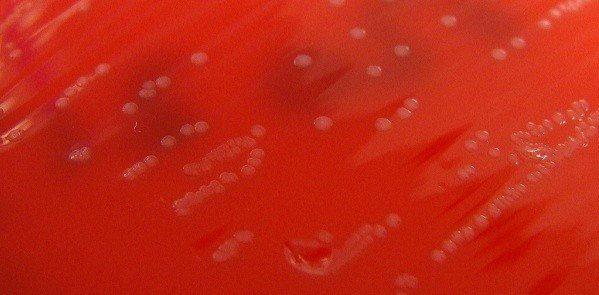Erysipeloid

Erysipeloid is a zoonosis that is caused by Erysipelothrix rhusiopathiae and is characterized by the formation of inflammatory lesions on the skin and joints. The predominant localization of the disease-causing process is the skin and joints on the outer surface of the fingers.
Development of the generalized form of the disease is possible. The diagnosis of the infectious disease is based on its clinical and epidemiological characteristics and the isolation of the causative agent from the skin biopsy or the patient’s blood.
Treatment consists of antibiotic therapy. According to the indications of the respective patient, anti-inflammatory, cleansing and antihistamine preparations are applied, as well as physiotherapy.
For the first time the infectious disease was described in 1873. In 1882, Louis Pasteur isolated the causative agent of erysipeloid and gave it the name “pig red wind”.
As already stated, the disease is a zoonosis, that is, it is transmitted to humans from animals. It is most common among people professionally involved in slaughtering animals for meat and handling fish.
These are butchers, butchers, cooks, fishermen, hunters, veterinarians and ordinary housewives. An increase in morbidity is registered in autumn and summer.
Erysipeloid – what are the causes
The cause of swine red wind is, as already stated, the bacterium of the genus Corynebacterium – Erysipelothrix rhusiopathiae, which has 2 types – porcine and mouse-derived. The first type is common among domestic animals, and the second among pets.
Human infection occurs through contact through the soil, hay, water, skin or meat of infected animals excreting pathogenic bacteria with urine and feces.
A person sick with swine flu cannot become the cause of infecting others.
Penetration of the causative agent of the disease into the skin becomes possible when its integrity is violated during scratches, itching due to insect bites or itchy dermatoses such as eczema, atopic dermatitis, During’s dermatitis herpetiformis, Guibert’s pink lichen, etc.< /p>
Most often, the infection takes place through injured skin of the palms, where an inflammatory process also develops, which can also cover the interphalangeal joints.
The spread of swine scarlet fever to the blood and lymph nodes with the development of a generalized form of the disease is observed extremely rarely.
What are the symptoms of the disease
The incubation period of zoonosis usually lasts about 1-3 days, but can take up to a week. The clinical manifestations of the disease most often begin to appear on the skin of the palms or on the upper part of the hands.
Depending on the nature of the course, dermatologists distinguish 4 main forms of swine scarlet fever – cutaneous, cutaneous-articular, anginal and generalized.
The skin form is the most common, it occurs against the background of mild signs of intoxication – fever, slightly unwell, chills, etc.
In some patients, no rise in body temperature is observed. Usually the disease begins with burning and itching around the site of penetration of the infectious organism.
The anginal form develops in individual cases when eating foods contaminated with the causative agent of the disease. Characterized by skin manifestations with clinical symptoms of angina.
Erysipeloid treatment
Etiotropic therapy of the disease is carried out for 7-10 days and is carried out taking into account the sensitivity of the causative agent. It is possible to use antibiotics such as penicillin and tetracycline.
According to the indications, antibiotic therapy is supplemented with procedures for cleansing the body, taking anti-inflammatory or antihistamine preparations, symptomatic treatment of the affected internal organs.
Of the physiotherapeutic methods for swine red wind, magnetotherapy, electrophoresis and magnetolaserotherapy are effective.



